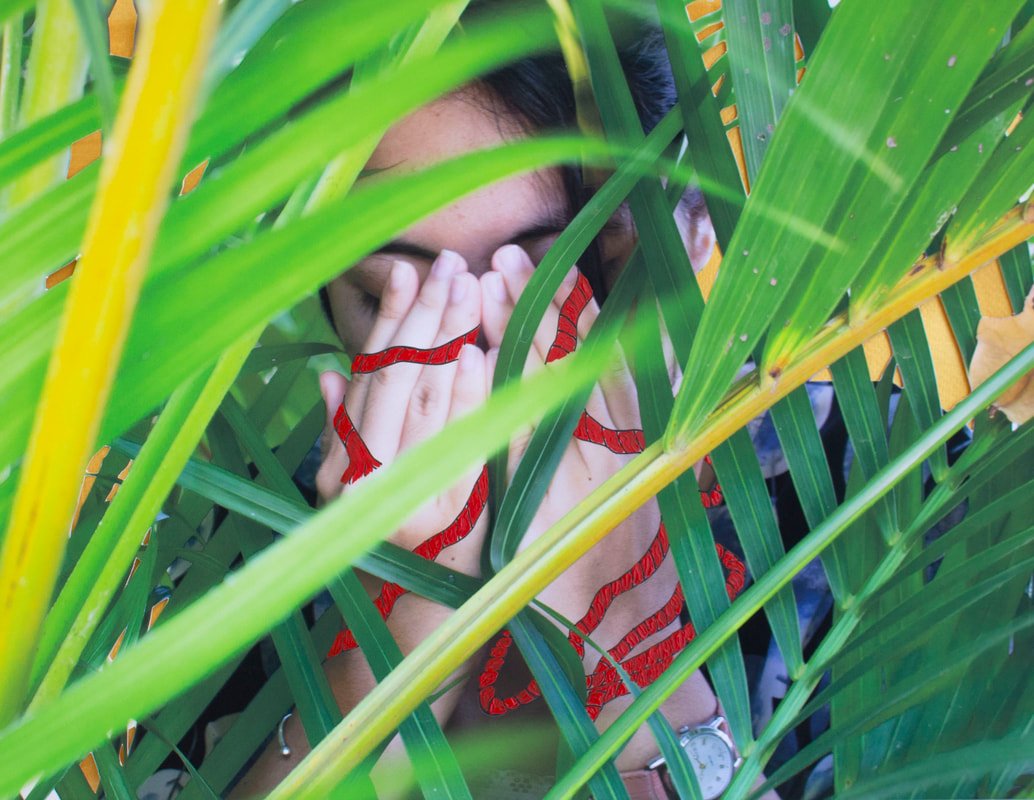Art by Kanha Hul entitled 100 Hands
Note: Koji Minami is a successful graphic designer and illustrator living in Seattle, Washington. Like many of us, he found his way to Cambodia and became smitten with its culture and explosive art scene. Minami has recently released a documentary about the contemporary art scene, which deserves our attention. Although we were not in Cambodia simultaneously, we share many friends. I am grateful for his permission to use his photographs, story and share his film with our readers.- Jinx Davis
In 2016 Koji Minami volunteered for a year in Cambodia and joined his friend Lauren Iida, an artist known throughout Cambodia, France and the United States for her remarkable paper cut-out art that adorns many public spaces and countless homes worldwide. In 2008, Lauren founded Open Studio Cambodia, an art collective based in Siem Reap, Cambodia, which supports emerging Cambodian contemporary artists and organizes exhibitions, workshops, and contemporary art tours throughout the country.
Koji writes:
“During my time in the country, I fell in love with its culture and people, and I was lucky enough to form some very deep friendships that have deeply impacted me. Since then, I have been back to visit a handful of times and always dreamed of somehow documenting the incredible stories of the people I’ve met along the way.”
In 2019, Koji and Lauren agreed to produce a collection of vignettes to illustrate the outburst of creativity and talent emerging from the country. With Lauren’s command of the Khmer language and her wide circle of friends and connections throughout the land, Koji could spend time with many contributing artists.
Making Made In Cambodia was an amazing opportunity to take a deeper dive into many aspects of Khmer culture, and to connect with the amazing artists featured. Being an artist myself, the subjects of art, expression, and the role that creativity plays in our lives and society are important to me. It was incredibly fascinating to hear the artists’ experiences from their personal perspective. From my perspective, their stories were both universal and unique – it was utterly fascinating to hear what it’s like to be an artist from another culture – what inspires them to create, what unique challenges they face, how they are seen in society. It was truly an honor and a privilege to listen to and share their stories. Making the documentary was a labor of love – it was self-funded on a shoestring budget, and shot in a scrappy run-and-gun style, so by necessity, I wore a lot of hats – director, cinematographer, sound recordist, editor, and producer. The project was initiated at the tail end of 2019, and it ended up taking me longer than anticipated to complete and release, due in part to the whole world catching on fire in 2020. But these stories are important, and they have grown close to my heart, so I’m absolutely thrilled to finally be able to share them.
For a short documentary, Koji Minami accomplishes a great deal. He introduces his viewers to recent history with excellent film and photographic choices displaying the golden days of music, the Khmer Rouge regime, the aftermath of the devastation, and the slow rebuilding of a nation. As a one-person crew, he masterly guides his camera to catch details, capturing the emotional and sensory feel of streets, rooms, faces, and conversation. His sensitivity and respect for the artists in the film is evident with each camera angle.
He presents his viewers to six relevant artists: Theanly Chov, Channy Chhouen, Meas Sokhorn, Neak Sophal, Morn Chear, and Kanha Hul. He captures their essence by allowing them to share their own stories. Each artist speaks boldly, honestly, and emotionally about their work and their nation’s promise and tribulations. For me, watching my friends was profoundly moving. It will be for you, as well.
The film’s production values are strong, thanks to the original music by Owen Whitcomb & Brenan Chambers, audio post-production by Ben Roth, translation by Prenz Sa-Nguon, and additional footage provided by Robert Campbell. Made in Cambodia was produced by Lauren Iida.
The film speaks for itself.
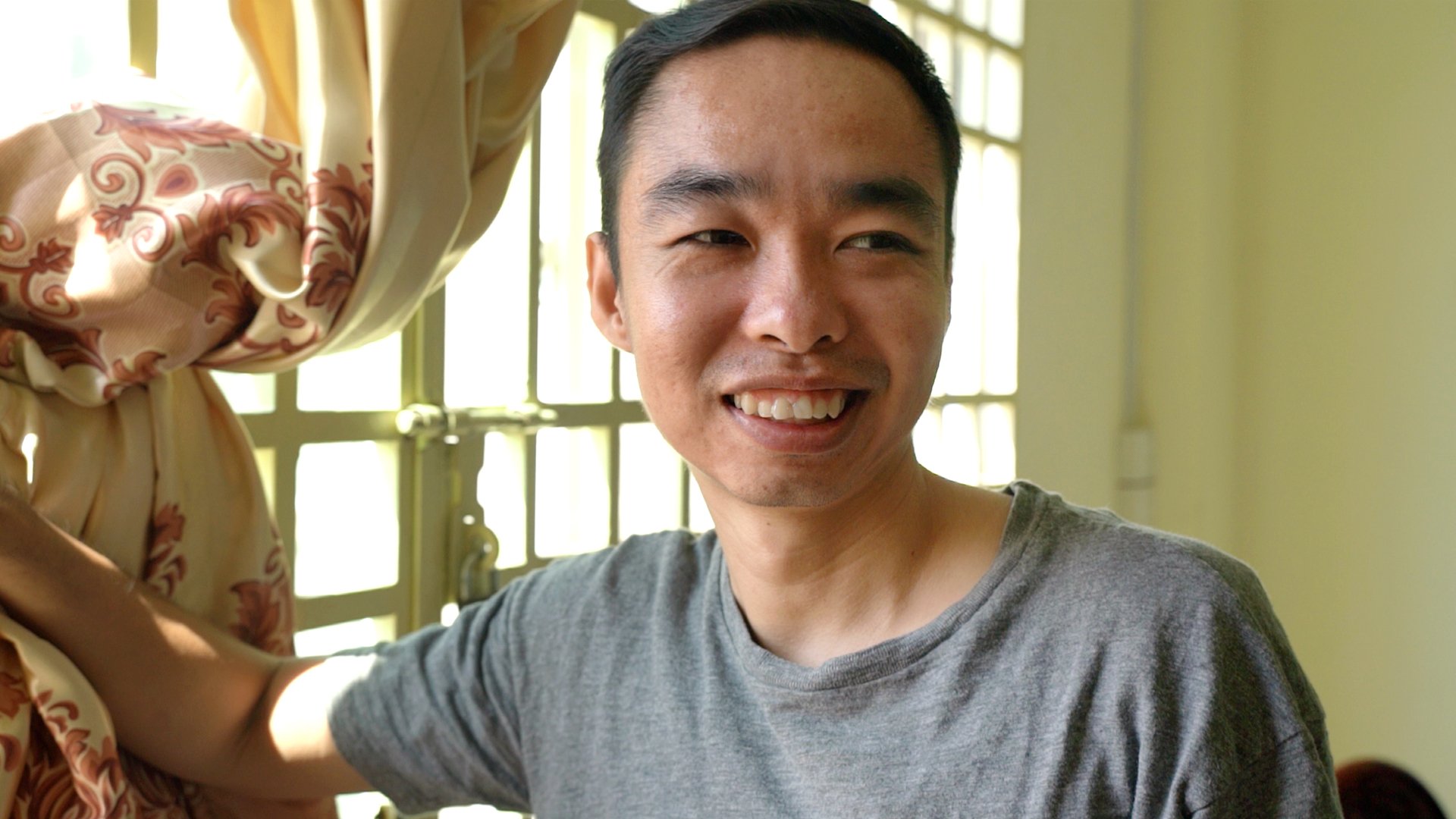
Theanly Chov – Painter
Theanly was born in the province of Battambang in Cambodia in 1985. He worked in Phnom Penh and then moved to Battambang in 2011.
He describes his work on his website:
When I was about 4 years old, I lived in a bookstore. On my walls hung posters and paintings by old mastersThose old images touched my heart even as a small child. I could see the magic and happiness in the pictures so vividly; it was as if I could get inside them. I was enchanted. ‘That’s when becoming an artist myself became my dream.
In 1999 I started painting with my uncle who is a sign painter and can paint like an old master. I had been struggling to find a way to learn how to become an artist- I couldn’t read English very well, and I had no idea how to use the internet, and so the only way I could learn how to paint was to copy old photos and old paintings for signs. So I had to wait, keep painting, learning English and find something else to do so I could make enough money to study art.
In 2004, after I graduated from high school, I wanted to go to Phnom Penh to study painting at the Royal Art University but my family couldn’t afford my living expenses, so I went back to my hometown, Battambang. After returning home, my cousin recommended me to study Graphic Design at a Vocational Training Centre. Unfortunately, the school didn’t have the budget to pay for art classes, so we only had a few art classes per year, and so my art education was slow.
I then secured an internship in Phnom Penh for a company called Cade Advertising. In my free time I studied English, I kept painting and I learned how to use the internet so I could study English and Chinese, art techniques, concepts and art history. This is when I met lots of artists, and I attended a weekend class on Anatomy by an American teacher name Marc Pollack, which helped me greatly with my art.
At the end of 2011 I decided to move away from the busy capital city back to sleepy Battambang, which was risky for my future career as an artist. Thankfully, I found a job in a gallery called Sammaki where I worked as a Gallery Manager. But my real passion was to be a full-time artist. So I quit and I just started painting full-time and helping my family.
I was involved in an art festival call Our City Festival for Battambang. I made huge neck tie installations called Urban Ties. Sometime later, with the help of some of my artist friends, my work was shown to Dana Langlois, who runs Java Arts in Phnom Pehn, and has helped many artists in Cambodia develop their careers. My exhibition at Java sold out and I was invited to exhibit in Singapore. I feel so much more secure and content working as a full-time artist. I feel that developing my practice gives me the chance to share my soul with the world. My painting creates a bridge from Cambodia to the world beyond.
When I covered his 2020 solo exhibit at Batia Sarem Gallery for his show called Rising, I was impressed with his clarity, and sincerity. He is a master at crystallizing tension in his works. He creates a theatrical stage with each work, revealing the human struggle for survival. He paints individuals across the spectrum of Khmer society, and those of us familiar with Cambodia get a thrill when we see a friend as his subject matter. His viewers receive the intangible gift of healing as he paints personal stories to express his country’s mutations.
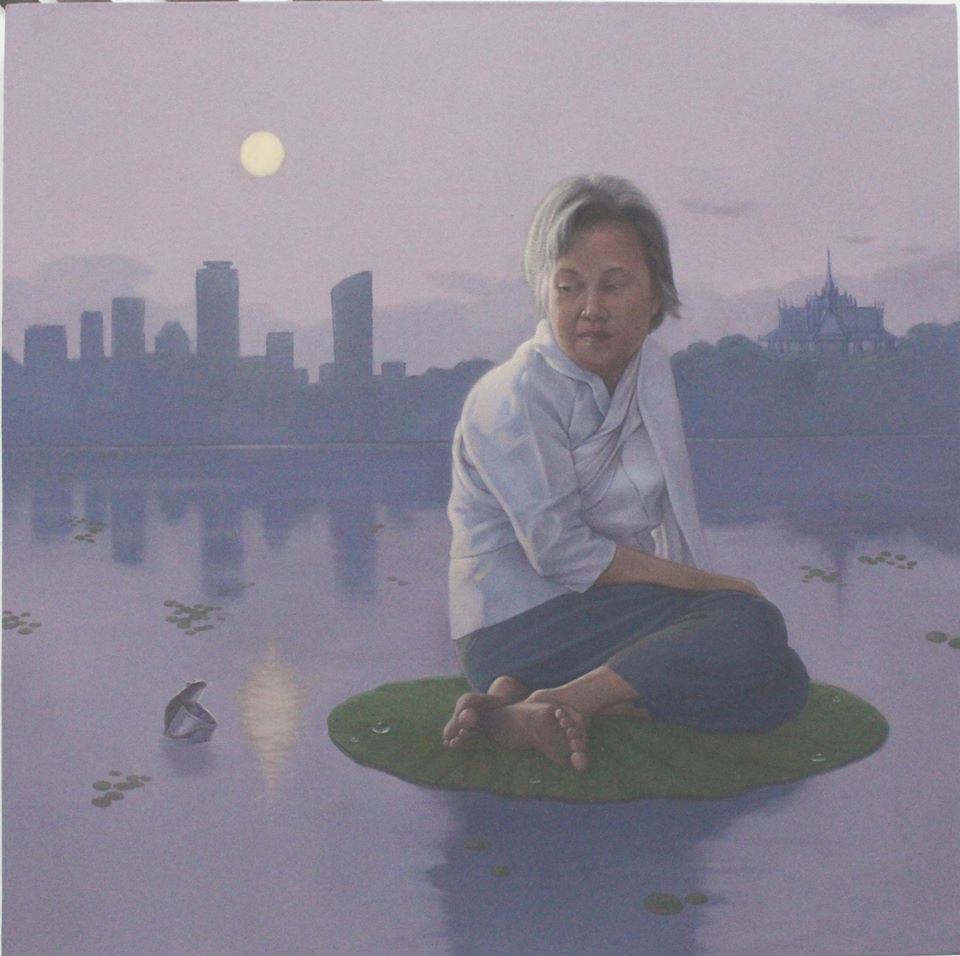

hanny Chov – Painter
Channy Chhoeun is a shining success story of Phare Ponleu Selpak and is legendary for bringing attention to Cambodia. He describes himself in an article in Vivu Journeys:
“I love sharing my story and feel honoured that people are interested in hearing about me and my art. Re-living my journey is always emotional for me as I reflect on how far I have come. I hope visitors can visualize the journey that brought me to where I am today. When I share my story and the story of the artwork in my studio, I hope they will feel what I felt. I hope they sense this is not just art but an expression of my life and of our Khmer culture. I never imagined I could leave the farm I grew up on to pursue my dream of becoming a professional artist: I thought I could only ever follow the cows.”
I have lost count of his numerous exhibitions where his large paintings sell very well. Yet despite his image as an idol for his generation, Channy remains remarkably serene in the highlight. When in conversation with him, he lowers his voice and looks straight into your eyes – signaling that he is present with you. He invites locals and tourists into his studio on the outskirts of Siem Reap, generously tells his stories, and listens to his visitor’s questions. His presence has an innate grace, even when he enjoys being photographed by admirers. By all accounts, his celebrity status has not affected the elegance and message of his works. Personally, I enjoy his sly sense of humor.
Combining classic elements with contemporary styles, his work is always embedded with social and environmental issues.
You can find available paintings on his website’s shop. One of my favorites was recently sold:
“Red Zone”
As a measure to reduce the spread of COVID, the government color coded areas based on numbers of infections. Those in Yellow Zones, moderate infection rates, were free to move about within the same zone. Those in Red Zones, high infection rates, were required to stay inside their homes. The artist’s home area was at one point designated a Yellow Zone, surrounded by a Red Zone, so movement was still limited. His home area became a Red Zone ans the artist was unable to leave the house. It was truly frightening as food ran out.
NOTE: This painting has a very special meaning for the artist. While working on this piece, he learned that his teacher and mentor, Srey Bandaul, just passed away from COVID. The artists had to set the painting aside and was unable to work on it for weeks due to the powerful emotions.
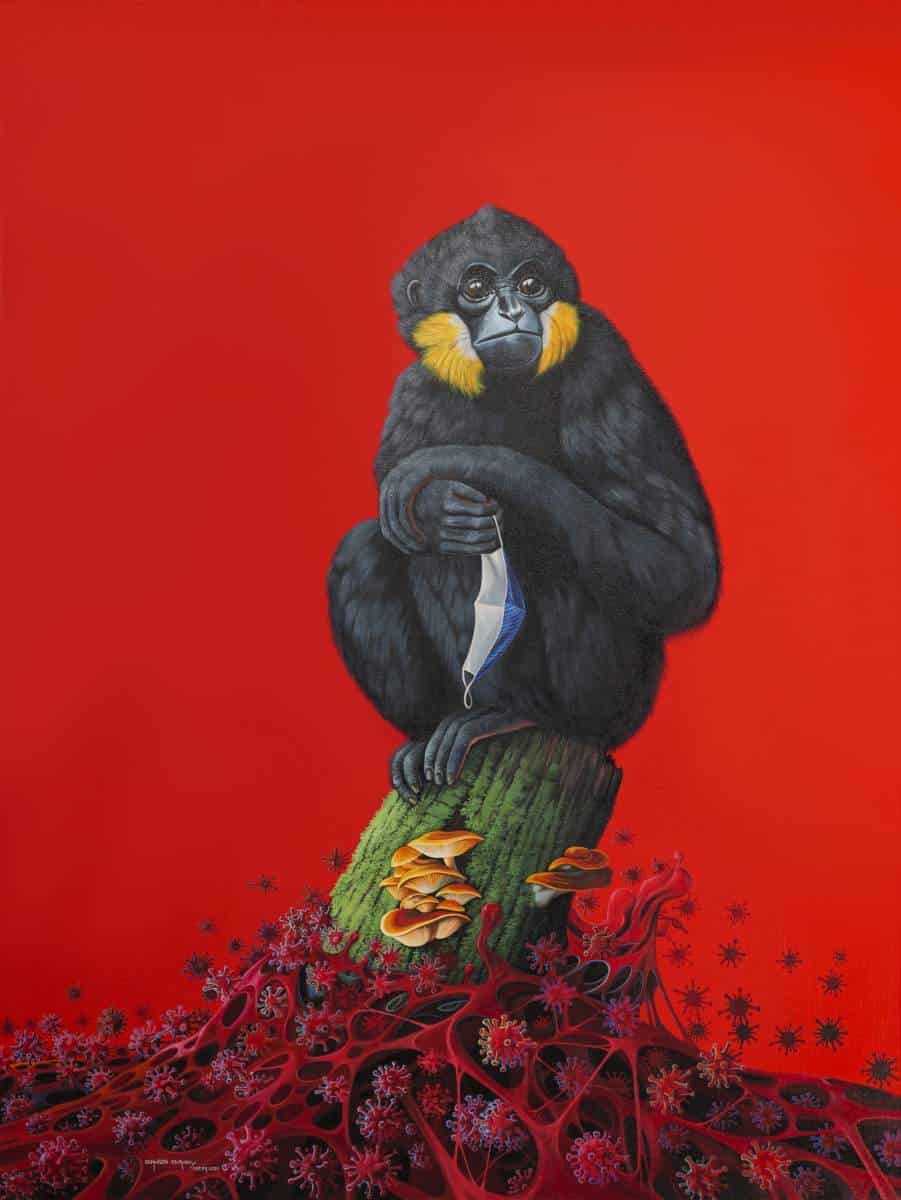

Meas Sokhorn
Koji Minami quotes Meas on his film’s website:
“I want to just break the frame, to let people have the freedom to find a way to see something they don’t normally see.”
Phnom Penh-based artist Meas Sokhorn creates bold and arresting work that seems to literally explode beyond the frame, forcing the viewer to pause and consider the questions that they pose. His paintings and sculptures examine often-overlooked aspects of modern life in Cambodia, challenging viewers to look closer, to find new ways to look at things.
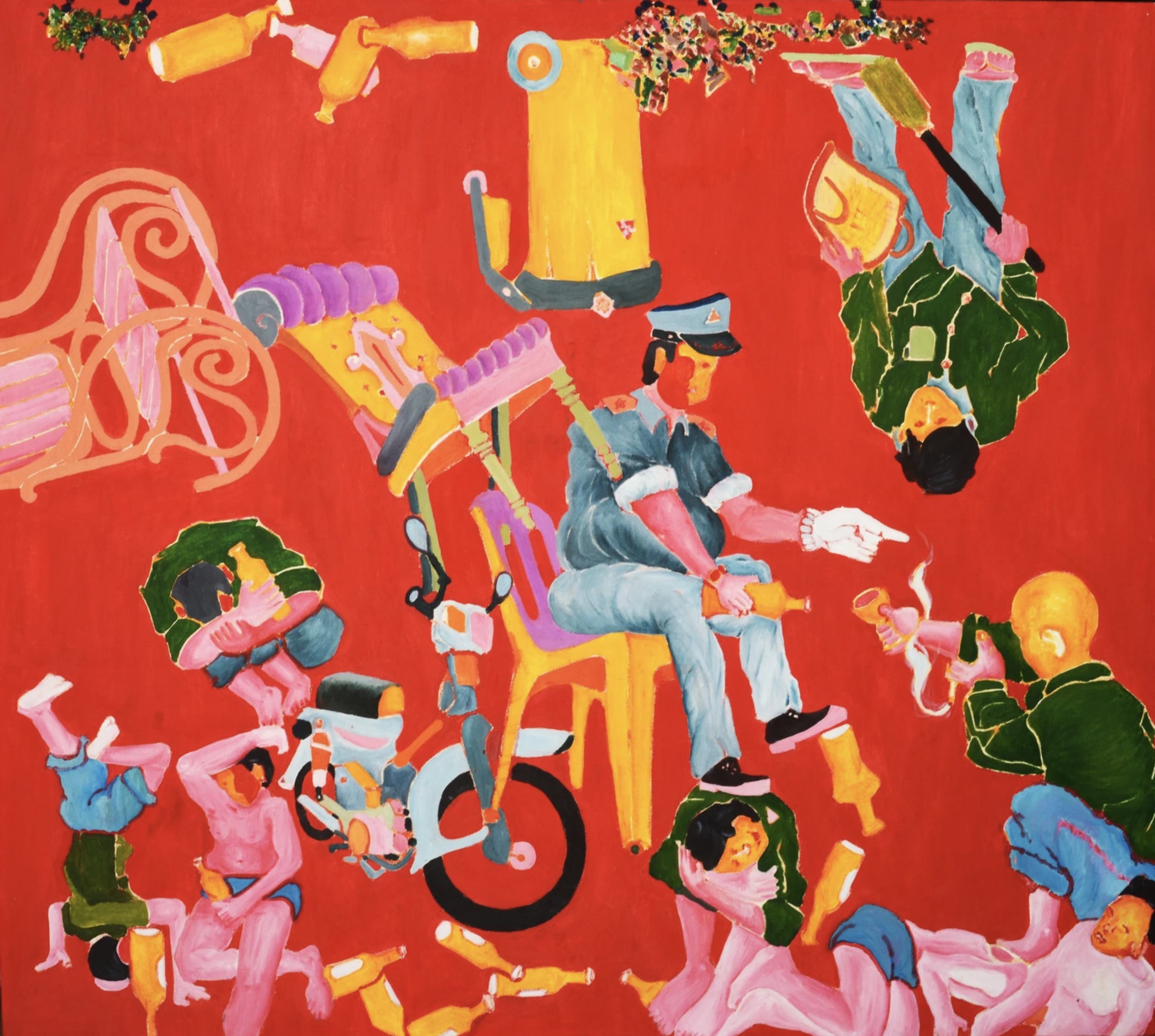
Meas Sokhorn – Painter, Sculptor
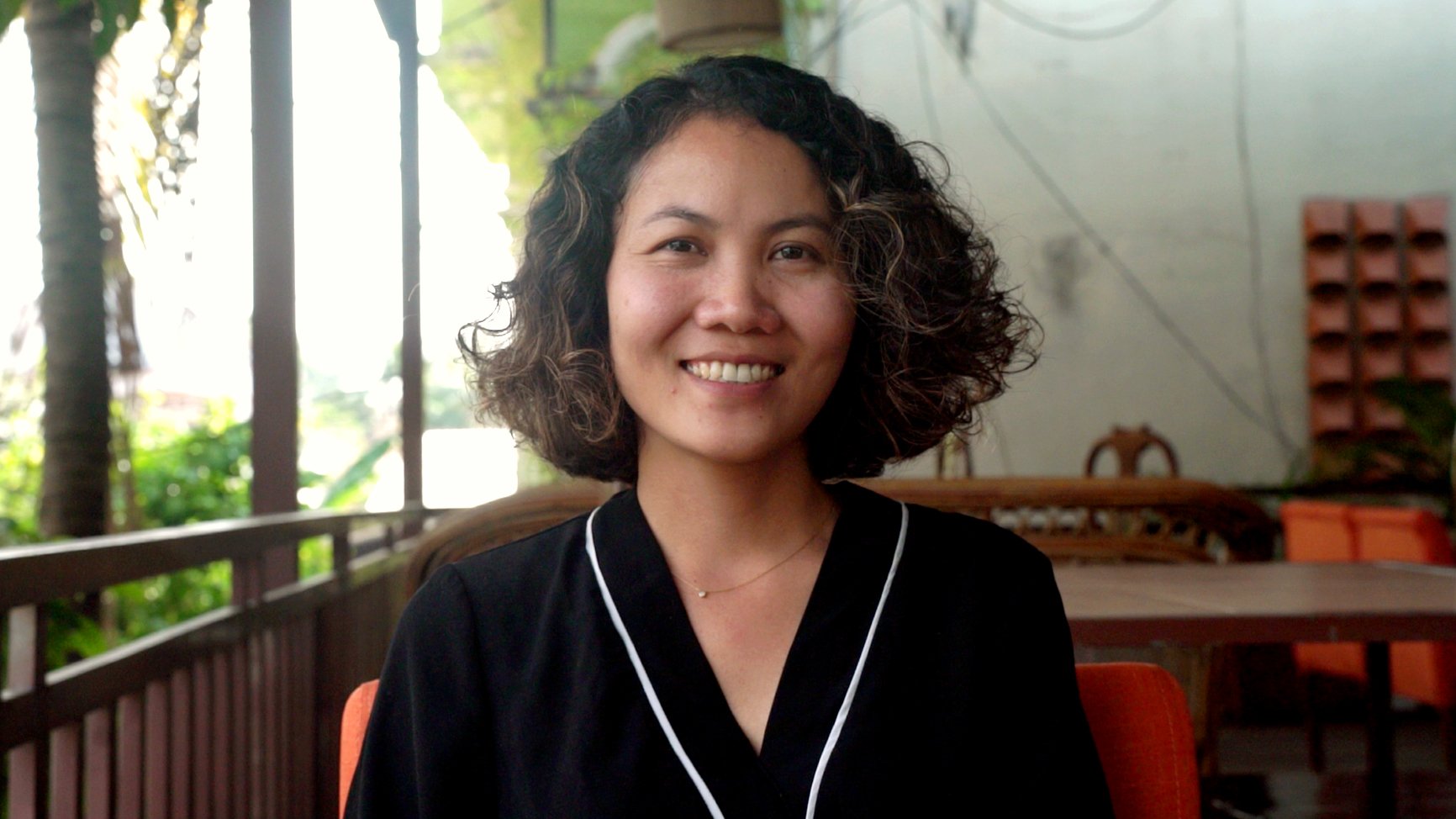
Neak Sophall – Photographer
A graduate of the Royal University of Fine Arts in Phnom Penh, has a growing reputation for her distinct aesthetic and ongoing thematic exploration of Cambodian society. Through composed portraiture staged collaboratively with her subjects, Sophal’s artwork often challenges social structures, illuminating the hidden memories and fear that animate people’s lives and identities.
Active locally and internationally, Sophal has participated in workshops and group and solo exhibitions in France, Sweden, the United States, Japan, and Australia, as well as at Angkor Photo Festival (Cambodia), Spot Art (Singapore), Hong Kong International Photo Festival, Bangkok Photo Festival, Asian Eye Culture (Thailand), Voice of Tacitness Exhibition (China), Our City Festival (Cambodia), SurVivArt (Germany), and Photo Phnom Penh Festival (Cambodia).

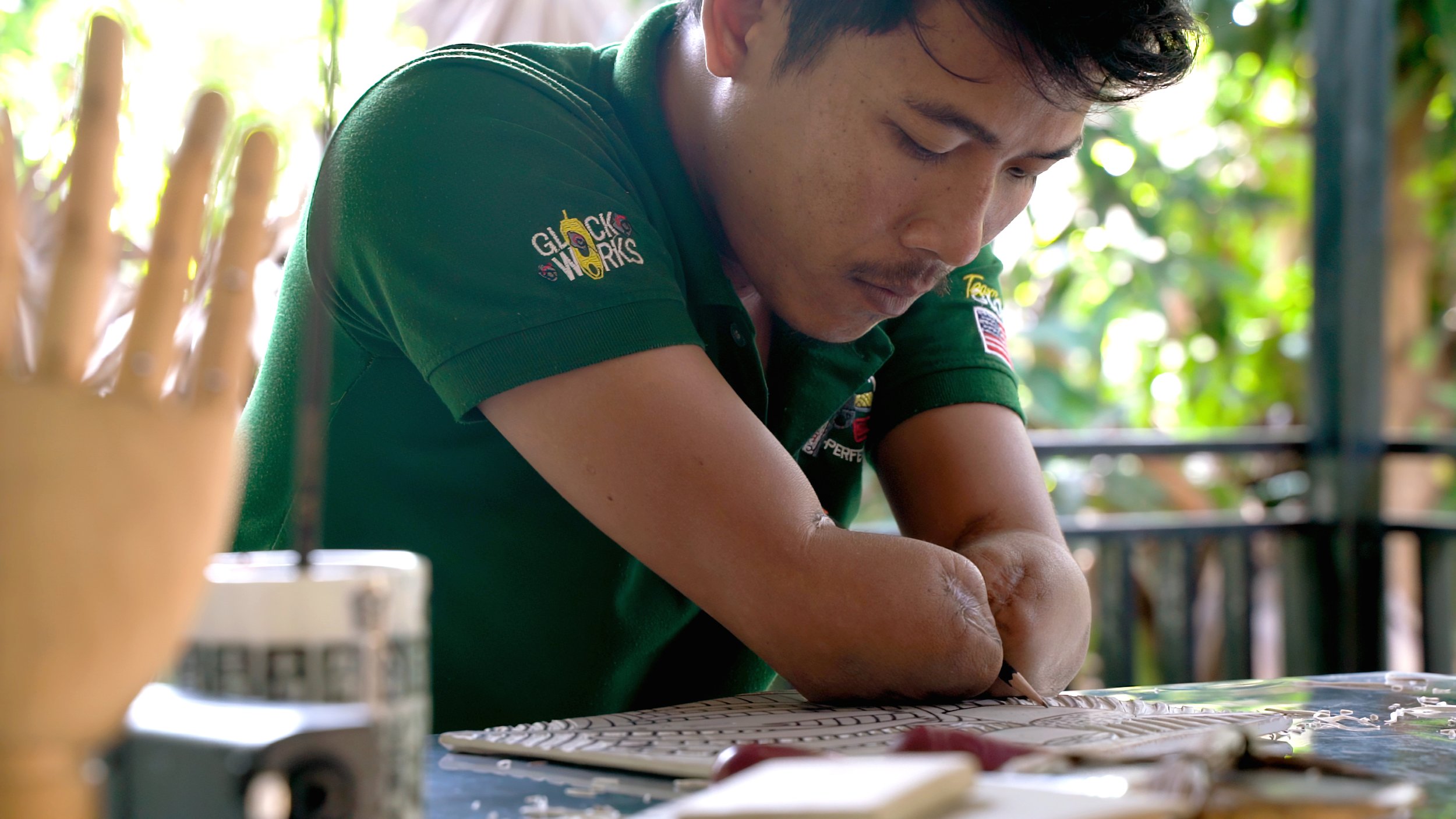
Morn Chear – Printmaker
Although Morn Chear is known for his art and printmaking, I am also a big fan of his singing. Nothing beats a neighborhood gathering when Morn is given the microphone. I’ve enjoyed watching him work and play with his children and friends. His spirit is bountiful. In April 2023, he and his wonderful wife added twins to their family. Morn is simply the kind of man that you wish everyone could have as a friend.
Koji Minami describes him as “a successful, multitalented visual and performing artist. He is an accomplished contemporary dancer, singer and visual artist proficient in illustration, painting, drawing, and printmaking. His work often depicts scenes from his everyday life before and after an electrical shock accident cost him both of his arms in his early 20s. He is a graduate of Epic Arts program and a former professional contemporary dancer. He and his wife relocated in 2019 to Siem Reap where he is pursuing his art career through Open Studio Cambodia.”
Believe in Yourself – 2019

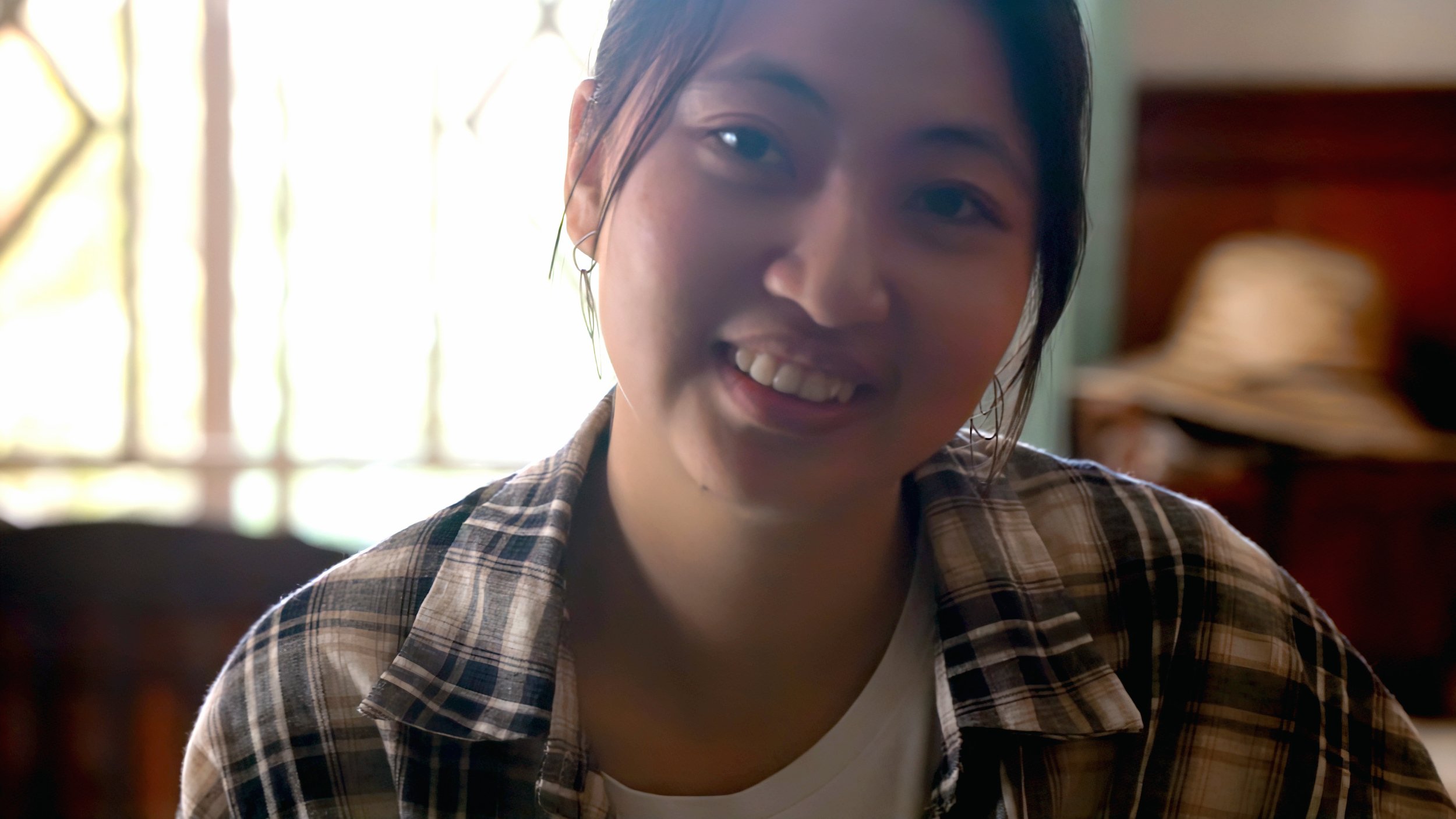
Kanha Hul – Multimedia
Kanha is stirring the air in Cambodia. Art helped her find her strength, and she is unapologetic about using her art to expand the role of women in Khmer society. Her process is intriguing and pulls you into her paintings by overlapping paint on staged photographs. She won a Treeline Artist Grant and presented in their 2020 exhibition Invisible Voices.
From Treeline:
Kahna Hul is inspired by a well-known proverb, which reads “Women have 100 hands”. Kahna is reminded of her mother and other women, who “As women, we must engage in endless multi-tasking in our roles as wives, mothers, housekeepers, cleaners, cooks, and our various other roles.” Through this proverb, she creates “100 Hands” with her community in Kralanh District, Siem Reap where she grew up. Kanha held workshops with friends and the local women, and during these workshops, she became inspired by their stories. She captured her inspiration in photos featuring the female villagers’ hands sewing together a sarong, the landscape of sarong with the villagers in the ricefield, and the vibrant sarongs engulfed by trees. “100 Hands” presents part of Kahna collaborative project with the community and her family. She pays honor to the voices and stories that villagers shared with her, and photographed the moments to document what she heard as visuals. At the same time, she brings attention to this proverb, “Women have 100 hands”, through her artwork. Her six selected photographs combine mixed media elements to printed photographs, including paper-cuts, paint, and ink. In this exhibition, she presents six mixed media works and the sarong that villagers sewed together as an installation.
Surroundings change, humans evolve and memories blur as time passes. Technologies have outgrown and taken over the modern age. The next generation of Cambodia, now more than ever have suffered a lot in both personal and cultural identity. In acting out these identity concerns, Tyl Kan creates three large paintings using canvas. Her medium is oil/acrylic, which she uses to narrate and represent the sense of loss of identity in the transition of time and environment. She also contemplates this issue in a short film. “Self-identity” as a person, a citizen and part of a new generation can be confusing when time forces us to constantly move forward. The past is being forgotten as previous generations perish into history. She hopes this series will be a reminder for her generation to start making positive waves or movements by showing where they are standing right now.
